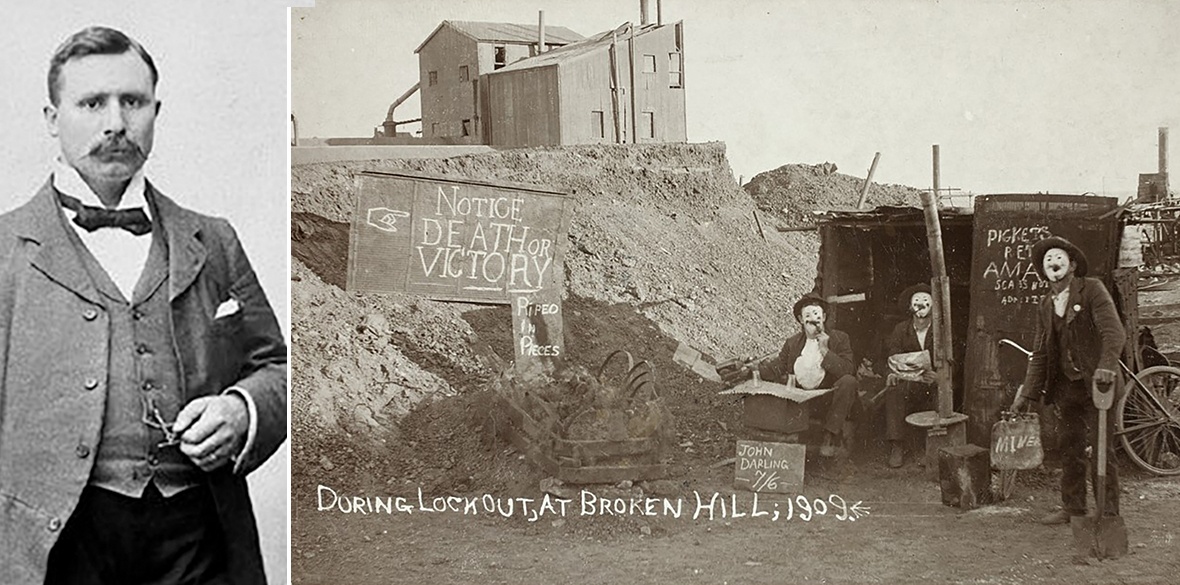This is the last article you can read this month
You can read more article this month
You can read more articles this month
Sorry your limit is up for this month
Reset on:
Please help support the Morning Star by subscribing here
TOM MANN travelled to Australia from September 1902. His union membership was now transferred to the Melbourne branch of the engineering union.
He had at the core of his thinking, class organisation in the form of trade unions. With unions at the centre of strategy, workers would exert growing power and establish influence in municipal government, co-operatives, and in legislation, through limited parliamentary action.
How could it be, he asked, in a time when wealth was greater than ever, that poverty had become endemic?
In a clear break with reformist politics, he asserts “socialism means the complete supersession of the present capitalist system.” The aim of municipalisation could only be realised if it was to remove monopoly control of the essentials of life.
Mann encouraged Australian socialists to gather together and to conduct education and turn their backs on an economic policy of protection and tariffs, or production for export, while so much remained to be done to feed the people at home.
He believed that the people should raise themselves to become “the democracy” and act in the national interest by taking over the land, transferring it to the nation and, in turn, taking over the means of production and government.
Mann’s time in Australia is best remembered for his role in the Broken Hill lock-out, where he organised miners in a silver and lead mining centre in the north-west of New South Wales.
But he also found time to conduct a free speech fight in Melbourne (for which he was jailed), form the Victorian Socialist Party and edit labour movement newspapers.
Broken Hill was a company town dominated by a single capitalist owner, The Broken Hill Proprietary Company Limited. During this strike, a Women’s Brigade was formed to support the strike aims. Mann was charged with unlawful assembly and sedition in an attempt to silence him.
Strikers used “Tom Mann trails” – secret routes to evade the police occupation of the town. They used a “Tom Mann train” to take strikers and their families to hear Mann deliver his speeches, just across the state boundary in Southern Australia.
He invited volunteer photographers to record police brutality and the miners’ union started a daily newspaper, The Barrier Daily Truth, to press their case. It is still union-owned and printing to this day.
Mann’s first speech at Broken Hill was delivered on October 4 1908, where he set out his beliefs. Only through unionism could the employers be resisted. “Into the unions” must be the cry, none should be indifferent.
On a Saturday morning, May 8 1909, Mann was back in the trades hall following his trial at which he was found not guilty. There had indeed been a conspiracy, he said. But it was not hatched by him. Rather it was entered into at the dawn of capitalism “when the law and the law makers” conspired “to tie the workers to the soil.” The resolution of the dispute did not satisfy Mann.
Mann was never again to set foot in Australia. In 1918, the government refused him leave to visit. In 1917 and again in 1919-20, the Broken Hill miners embarked on the most powerful strikes in Australian history.
There is no doubt Mann was trying to return to play a role in this and the government will have saved itself a great deal of grief by keeping Mann and his comrades at Broken Hill on separate continents.
He left Australia enthused by the emerging solidarity and combativeness of the movement but was frustrated at their failure to adopt more radical programmes. What was to be the strategy of this new movement, known in the USA and on the continent as syndicalism?
Crucially, where Mann differed from continental syndicalists was on the question of how to establish new kinds of unions. Many continental syndicalists believed that existing unions had to be broken up and supplanted by new ones, with new structures and orientation. But this would not do for Mann, who believed his next phase would build from, rather than replace, existing organisation.
It was with his return from Australia and South Africa in May 1910 that Mann emerged as the principal spokesman in the unions for the doctrine of syndicalism.
Returning from Paris in July, he began to publish The Industrial Syndicalist. This became the inspiration behind the highly influential “rank and file” movements that developed. The Industrial Syndicalist defined the new thinking as follows: “It should be avowedly and clearly revolutionary in its aim and method.”
For Mann, “Revolution is the means of, not the alternative to, evolution.” Evolution without the sense of direction and revolutionary impetus would not be evolution at all but become another excuse for the status quo.
Why was the performance of the unions as dismal as that of the parliamentary representatives? Mann believed that the root was a failure to move beyond sectional unionism to industrial unionism which could stop worker competing with worker.
Mann was thinking of how best to gather the organised strength of unionism, employing direct action, to take the offensive against employers. Although only sketchily formed he was also thinking about how an industrial union could be used to run industry in the future, without capitalists, or even without a parliament.
His visit to Paris to study the General Confederation of Labour (CGT) reinforced the belief. The CGT was eliminating sectional competition, agitating against craft exclusivity, moving to an “all-in-the-union” approach and was beginning to wield the mass strike weapon as a tactic up to the use of general strikes.
Mann claimed capitalism had “not sat still” and “we may not use in 1910 the same weapon that we used against the masters in 1829.”
By 1914, the days of seeking to balance in his political schema, trade unionism with co-operation and royal commissions with elections to local boards, were very much behind him. Mann advocated that the aim of the movement should be to “secure to the workers the full fruits of their labour.”
Mann embraced core tenets of syndicalism. But he also recognised the potential in social democracy. Meanwhile the labour movement grew in size and combativeness and the relationship between the industrial and political wings went undefined.
Phil Katz’s book Yours for the Revolution is published by Manifesto Press Co-operative Ltd. Readers can buy the book by visiting the Morning Star shop shop.morningstaronline.co.uk/collections/books.
Manifesto Press are embarking on their first summer speaking tour, WELL READ. WELL RED. Tickets can be reserved at linktr.ee/manifestopresscoop.
Phil Katz is a designer and writer and has been a union organiser for 40 years. He contributes regularly to the Morning Star. Buy next weekend’s Morning Star to read part IV in this serialisation.









